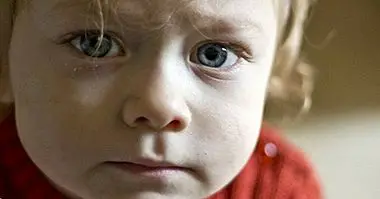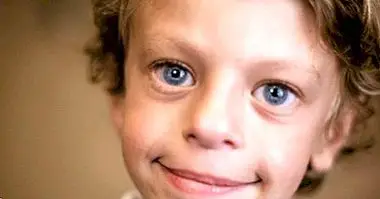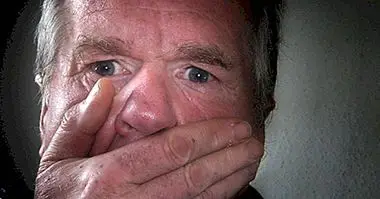Childhood Disintegrative Disorder: causes, symptoms and diagnosis
Childhood Disintegrative Disorder (TDI) is the psychiatric category which was used until recently to talk about one of the forms that Autism Spectrum Disorder (ASD) takes in its early stages of development.
This category has had important modifications since the last update of the manuals that are used in psychiatry and psychology as a clinical guide. However, being recent changes, these are categories that continue to be used in some contexts, and even in a combined way, so it is worth reviewing them.
- Related article: "The 7 types of neurodevelopmental disorders (symptoms and causes)"
What is Childhood Disintegrative Disorder (TDI)?
Before beginning to describe the Childhood Disintegrative Disorder and due to the transformations that have had their diagnostic criteria, it is important to clarify how the diagnoses themselves work.
The Diagnostic and Statistical Manuals of the Mental Disorders (DSM, for its acronym in English), are compendiums published by the American Psychiatric Association (APA, also by its acronym in English), which describes and group a set of clinical manifestations known as mental disorders.
These manuals have existed since the second half of the previous century in five different versions, and although initially their focus was merely descriptive and informative, currently are among the most commonly used clinical guidelines by mental health professionals .
To mention this is important to understand what the Childhood Disintegrative Disorder was, what criteria continue and what is its name at present.
- Maybe you're interested: "The 6 stages of childhood (physical and psychic development)"
TDI: a Generalized Development Disorder
Childhood Disintegrative Disorder is a psychiatric classification proposed by the DSM-IV (the DSM in its fourth version) and is part of the Generalized Developmental Disorders (PDD); which, in turn, they are part of the category of the Starter disorders in childhood, childhood or adolescence .
According to the DSM-IV, the general characteristic of the TGD is the presence of a severe and widespread disturbance of several areas of early development , that being serious, it is considered as improper for the level of development and the mental age of the boy or girl.
It manifests in the following areas: skills for social interaction and communication; as well as the presence of stereotyped interests and behaviors (stereotypes is the technical name). In the PDD category, there was also the Autistic Disorder, the Rett Disorder, the Asperger Disorder, the Generalized Development Disorder Not Specified and the Infantile Disintegrative Disorder.
Main characteristic of Childhood Disintegrative Disorder
The main characteristic of the TDI is a marked regression of multiple areas of activity after a period of at least 2 years of development that apparently corresponded to the child's age.
That is, the TDI manifests when the child is at least two years old, has acquired skills expected for his age and, unexpectedly, a regression occurs in at least two of the following areas: verbal and nonverbal communication (expressive or receptive language), social relations and adaptive behavior, play, toilet training, motor skills.
It was also known as Heller's Syndrome, Dementia Infantilis or Disintegrative Psychosis.
From TDI to ASD
As of May 2013, when the latest version of the statistical manuals of mental disorders (the DSM-V) was published, the Disorders of Childhood, Childhood or Adolescence, were no longer called, for become Neurodevelopmental Disorders.
Childhood Disintegrative Disorder (along with other childhood disorders that are located in the subclassification of the PDD), they became part of a single spectrum : Autism Spectrum Disorder.
Childhood, childhood or adolescence DSM-IV Disorders included Mental Retardation, Pervasive Developmental Disorders, Attention Deficit Disorders and Disruptive Behavior, Motor Skill Disorders, Tic Disorders, Learning Disorders, Communication Disorders, Eating Disorders and Child Eating Conduct, Disorders of Disorders, and Other Disorders.
In DSM 5, Neurodevelopmental Disorders are a group of conditions that appear in the early stages of early development, especially characterized by ** difficulties in establishing interpersonal, socio-adaptive and academic relationships. **
Thus, the subcategories of the DSM-IV that we explained above, are transformed into the following: Intellectual Disability, Autistic Spectrum Disorder, Attention Deficit Disorders with Hyperactivity, Motor Disorders, Specific Learning Disorder, Communication Disorders, Eating Disorders , Disorders of Excretion and Disorders of Neurodevelopment Not Specified.
What are the diagnostic criteria currently?
Currently, it is considered that the TDI is one of the many forms that take the first phases of the development of the TEA; question that nowadays It is increasingly easy to diagnose and accompany from the first stages.
As such, it is not a disease, so it has no cure or treatment, but the intervention is about stimulating adaptive skills within the child's own abilities and limits, while detecting and meeting the needs of the child. support for.
ASD is defined in the DSM by mild, moderate or severe levels, and through two basic criteria: 1. the existence a persistent difference in communication (verbal and non-verbal) and social interaction with difficulties to establish interpersonal relationships and to adapt in different contexts; and 2. by the presence of restrictive and repetitive patterns of behavior, for example, stereotypies, monotony or very restricted rituals.
The causes and mechanisms that generate it are nonspecific , although there are suspicions about a central nervous system lesion and about its relationship with medical diseases or genetic conditions. It usually starts with significant increases in activity levels accompanied by periods of irritability and anxiety, followed by loss of speech.
Bibliographic references:
- Martínez, B. & Rico, D. (2014). The Disorders of Neurodevelopment in the DSM-5. Workshop at the AVAP Conference, of the University of Valencia. Retrieved April 27, 2018. Available at //www.avap-cv.com/images/actividades/2014_jornadas/DSM-5_Final_2.pdf
- APA (2013). Diagnostic and Statistical Manual of Mental Disorders, Fifth Edition (DSM-V). American Psychiatric Publishing: Washington, DC; London
- APA (1995). Diagnostic and Statistical Manual of Mental Disorders Fourth Version (DSM-IV). Masson: Barcelona
- Volkmar, F. & Cohen, D. (1989). Disintegrative Disorder or "Late Onset" Autism. The Journal of Child Psychology and Psychiatry. 30 (5): 717-724.



















